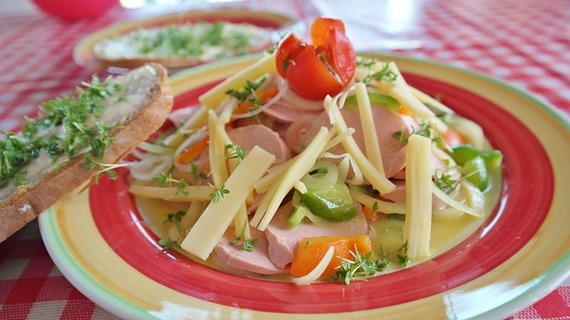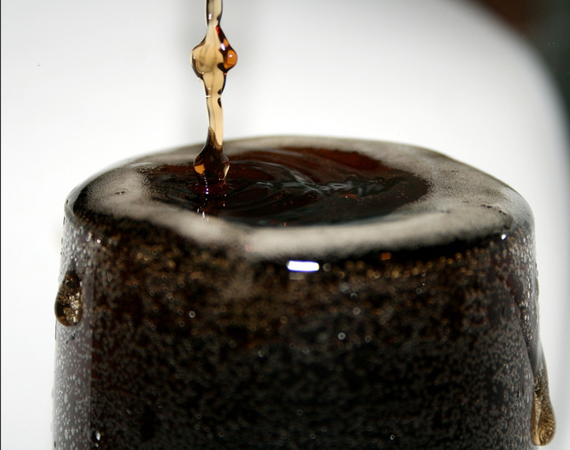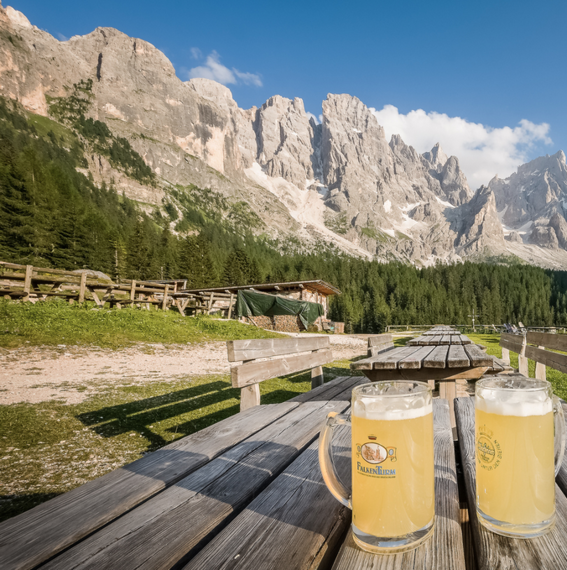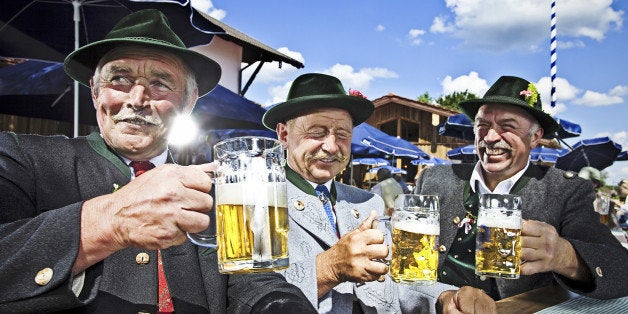
It's that time of the year again. The streets of Munich are full of people wearing lederhosen and dirndls. The subway to Theresienwiese is as jam-packed as those in New York or London. Every hotel in and around Munich has been fully booked for months. The atmosphere is boisterous and joyful. Beer drinkers from all over the world are clinking their steins together. All these signs leave no doubt-- it's Oktoberfest!
During your stay here in Munich, there are two essentials: enjoying the city in the right company and making sure you're adequately nourished by sampling traditional Bavarian cuisine. I introduced some of these delicacies to a group of hungry food aficionados from other countries that I met through the international Munich Community on InterNations. To get you started, here is a list of 10 not-to-miss food items in Bavaria, apart from the oh-so-common bratwurst and sauerkraut (although they are also totally worth eating). Plus, this list is a great chance to practice your Bavarian pronunciation!
Appetizers | Mogndratzerl (literally "tummy ticklers")
• Obatzda mit Brez'n
(oh-bahts-dah mit bray-tzen)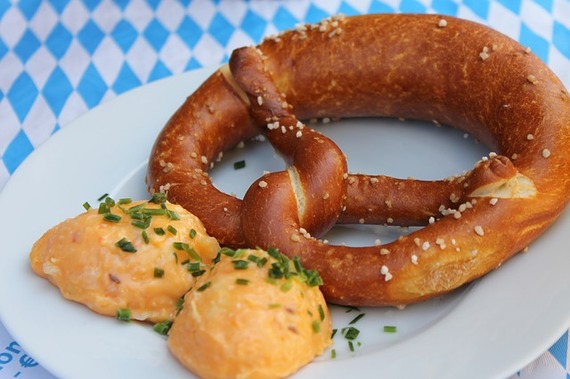
This delicious cheese spread is a great way to start your Bavarian food journey. Obatzda is a rich mix of two-thirds camembert and one-third butter. To give it some zing, sweet and/or hot paprika powder, salt, pepper and a small amount of beer are added. Less traditional, but no less delicious, are the optional ingredients: onions, garlic, horseradish, cloves, and caraway seeds. Traditionally, Obatzda tastes best when spread on a Bavarian pretzel.
Attention, meat lovers! You're in for a special kind of salad, and not the vegetable kind: a Bavarian sausage salad. The base for the salad is a sliced Regensburger pork sausage, mixed with onions, oil, white wine vinegar, sugar, chives, salt, and pepper. If some grated cheese is added, the Bavarian sausage salad will quickly turn into a Swiss sausage salad. The Bavarians like to eat it with freshly baked and crusty rye bread.
Entrées | Wos Gscheid's (literally "something substantial")
•A Halb's Hendl
(a hallbs hen-dul)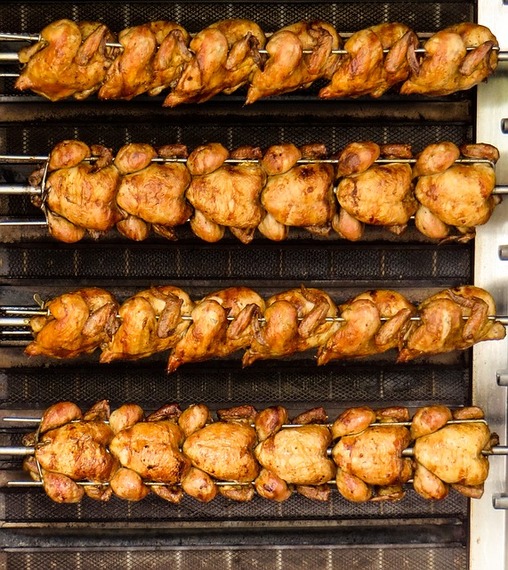
An Oktoberfest classic: half a roast chicken from the rotisserie grill is a very popular and delicious Bavarian dish -- you're definitely in for a special treat! The tastiest part of the chicken is the skin, which is well seasoned and very crispy. The tender white meat is considered to be best around the bones. Don't miss this specialty if you're at the Oktoberfest!
•Reiberdatschi
(rye-ber-dodge-ee)
The Bavarian version of potato pancakes is made of grated potatoes, flour, and eggs, and often flavored with onions and garlic. In Bavaria, Reiberdatschi are usually served with applesauce, making a sweet and savory combination. However, you might also find them served with sour cream or even sauerkraut. Bavarian gourmets enjoy them with salmon or sauces spiced with fresh herbs.
•Schweinebraten
(shvine-uh-brah-ten)
The signature Bavarian dish, Schweinebraten is a pork roast traditionally served with potato dumplings and a helping of cabbage salad flavored with bacon bits. The typical dark, savory gravy is made by adding meat stock and dark beer. Schweinebraten isn't only served at the Oktoberfest -- it's a ubiquitous dish that can be found all year round in any Bavarian-style restaurant and at any beer garden. Wash it down with a stein of Bavarian "liquid gold" -- i.e. beer!
•Schupfnudeln
(shoopf-noo-delln)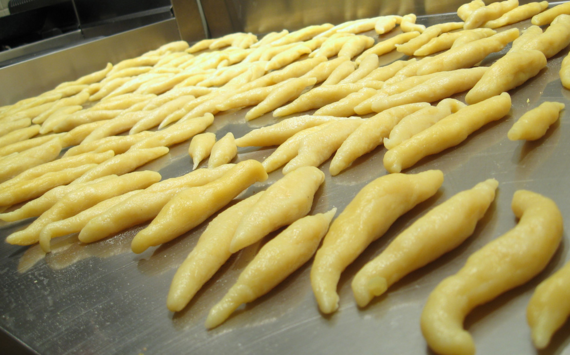
Are you up for the Bavarian version of an Italian dish? These rolled noodles are made of potatoes, not flour, and are therefore similar to Italian gnocchi. After they've been fried in butter in a pan, there are many ways to serve them: either as a sweet dish, with applesauce and powdered sugar, or as a more savory kind of food with sauerkraut and bits of bacon. Schupfnudeln do justice to virtually any flavor!
Dessert | Nachspeis (literally "after food")
•Zwetschgendatschi
(tsvetsch-gen-dodge-ee)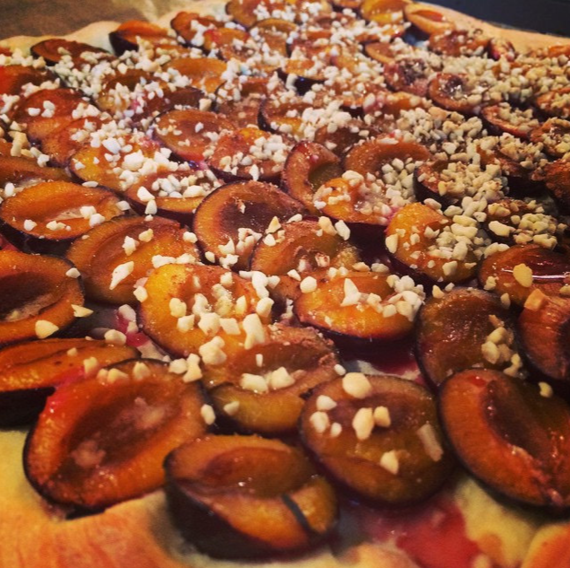
If you happen to be in Bavaria during Oktoberfest, consider yourself lucky! Zwetschgendatschi is a seasonal treat that's only available in late summer / early autumn. The cake is made of yeast dough thinly spread onto a baking sheet and covered with pitted damsons (small plums), with or without streusel. To counteract the tartness of the plums, sprinkle some extra sugar on top and add a dollop of whipped cream, trust me. If you need some kuchen to have with your coffee and you're here during the right season, this is an option I highly recommend.
•Hollerkiachl
(haul-er-key-ah-xel)
This unique dessert is a true Bavarian specialty for spring and early summer (so unfortunately, you won't find it during Oktoberfest). Fresh elderflowers (blossoms of the elder bush) are dipped into a batter made of flour, eggs, salt, and beer. (Of course, how could we forget about the beer? It makes everything better and adds a Bavarian twist.) After the blossoms have been covered in batter, they're deep-fried and served piping hot with powdered sugar. Somewhat decadent but truly delicious!
Beverages | Zum Dringa (literally "things to drink")
In Germany people inexplicably mix their drinks--even their non-alcoholic ones. An example is Spezi, a mixture of cola and orange soda. It might sound like a bizarre combination at first, but it's surprisingly refreshing and even my American grandma swears by it. I've tried mixing it myself at soft drink machines in the US, but it never tasted quite the same as the Spezi in Bavaria. You can order it at any Bavarian venue or purchase a bottle of Mezzo Mix in the supermarket.
The second item in our (mixed) drinks category is Radler. This popular drink is a mixture of half export beer (Helles) and half clear lemon soda. It's perfect for people looking to consume a little less alcohol or to satisfy their sweet tooth. Radler can be compared to the British shandy, but it tastes always citrusy and never gingery. Bavarians enjoy this refreshing drink most on hot summer days.
Enjoy your meal! | An Guadn! (literally "good appetite")
